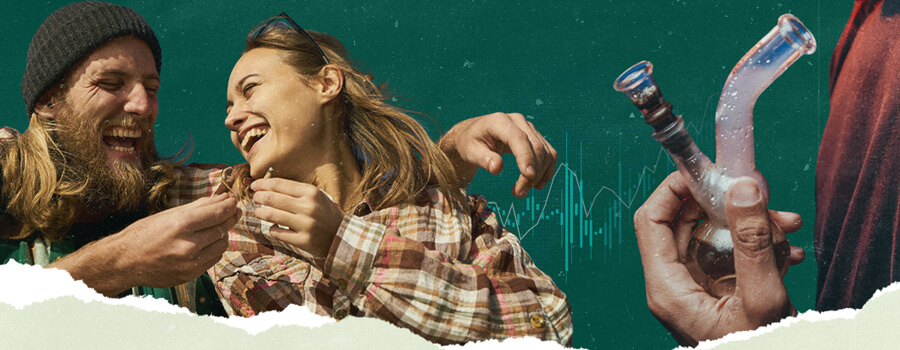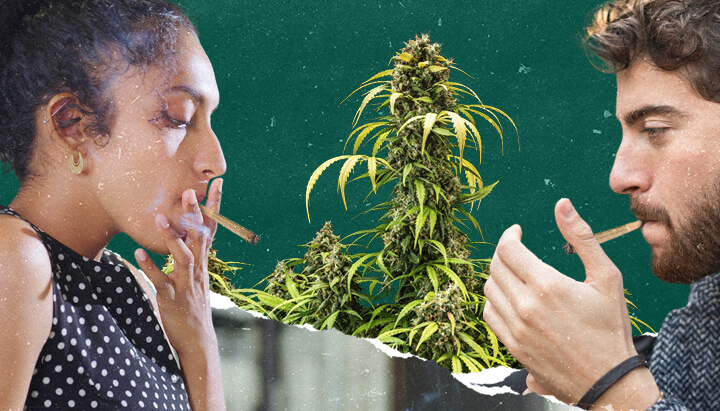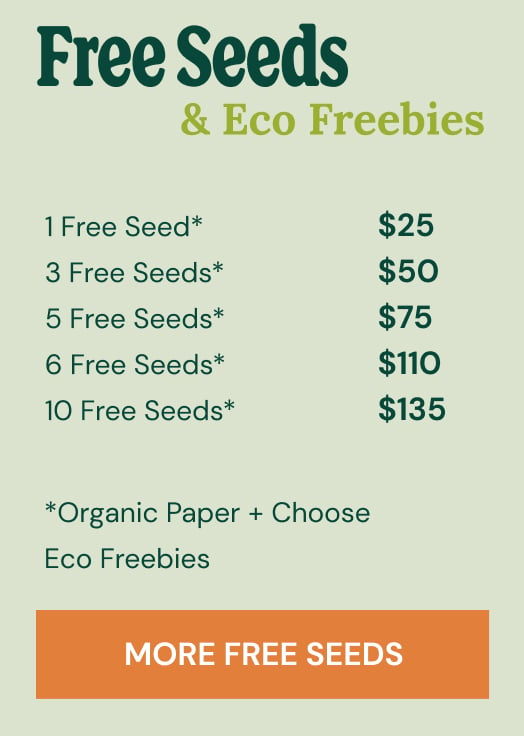.

Demographic Shifts in Cannabis Use
Cannabis use is growing, at least in Europe and the US. This is a reflection of the changing legal, cultural, and scientific landscape. Let's take a deeper look to understand what's happening with demographic shifts in weed use, and why.
Key Points
- The global cannabis market is projected to reach $45 billion by 2027 .
- What percent of Americans smoke weed? Nearly half of Americans (47%) have tried marijuana.
- Marijuana use spans diverse demographics, driven by legalization and shifting cultural attitudes.
- Changes in accessibility and consumption patterns are transforming cannabis into a mainstream phenomenon.
- Women are the fastest-growing demographic of marijuana users.
Marijuana is no longer the preserve of stoners illicitly procuring and smoking their herb. It has evolved into a diverse industry catering to a wide array of consumers, including professionals, parents, and older adults, each seeking different benefits, ranging from relaxation and recreation to general well-being. These days, it’s pretty mainstream.
But how and why are demographic trends related to marijuana use changing? In this article, we’re exploring demographic shifts in cannabis use and looking at consumer data to understand what the future might hold.
The Changing Legal Landscape of Marijuana
In the last decade or two, the Western world, in particular, has seen a significant shift in how cannabis is viewed, both legally and socially. This shift is rooted in broader societal changes, including increasing advocacy, public awareness campaigns highlighting its potential benefits, and a growing push for criminal justice reform. Once an enemy in “the war on drugs,” marijuana is now legal in numerous states in the US, legal nationwide in Canada, Uruguay, Germany, and Thailand (among others), and decriminalized in Spain and Portugal.
Social views certainly drove this change, but the legal shift has also precipitated a large change in how the general public views weed—not just in the countries where it’s legal, but across the world. Even where marijuana remains illegal, it is spoken about and consumed much more openly than it was even 10 years ago.
More and more people are using weed today. Truth be told, large numbers of people have always used cannabis, but it’s becoming quite normalized. For instance, 79% of Americans now live close to a dispensary, and 88% support legalization. Twenty years ago, this would have been unthinkable.
Legalization Milestones in the Last Decade
Over the last decade, the following milestones represent some of the biggest changes in marijuana legislation:
- The US has seen over 20 states legalize recreational marijuana since 2013, with states like New York and Illinois becoming key markets.
- Canada legalized recreational cannabis in 2018, setting a precedent for other countries.
- In 2022, Thailand became the first Asian country to decriminalize weed, reflecting global momentum.
- Germany’s 2024 legalization of recreational cannabis positions it as Europe’s largest market.
These developments demonstrate that legalization is no longer confined to North America and parts of Europe. As more countries assess the social and economic impacts of legal marijuana, the global map of legality is likely to expand further. In addition to the financial benefits, legalization has allowed for more regulated production, improved quality control, and a decrease in the stigma surrounding weed users.
How Legalization Impacts Consumer Behavior
Legalization helps to legitimize cannabis and therefore directly affects consumer behavior. By destigmatizing marijuana use, legalization has led to more first-time users, as those who would have been put off due to fear of legal reprisal now have nothing to worry about. These users include individuals seeking alternatives to traditional wellness products as well as those exploring weed out of curiosity in a controlled and safe environment. What’s more, dispensaries make cannabis more accessible and the process of sourcing it safer, encouraging still more people to try it.
The result? Apart from more people using marijuana, tax revenue has rocketed! In 2024, cannabis-related tax generated $20 billion globally , funding public health and education initiatives. Furthermore, with a more open conversation surrounding cannabis, whole industries have appeared around other cannabis-derived compounds such as CBD, creating new jobs and new trends. For instance, the beauty industry has adopted CBD into skincare and wellness products, further diversifying its consumer base.

.jpg)
Demographics Shaping Marijuana Consumption
Marijuana use demographics are changing, and these changing demographics are in turn shaping how cannabis is grown, marketed, and consumed. Gone are the days when the only ways to consume weed were spliffs and bongs! The introduction of edibles, oils, tinctures, beverages, and even infused snacks has widened the appeal of cannabis to non-smokers.
In the Western world, marijuana has traditionally been a male-heavy pursuit—often among younger to middle-aged men. However, it now has a much broader appeal, and more diverse groups of people are using it.
While women have, of course, always used cannabis, they have accounted for a relatively small number of users. Not so anymore. Women have a tendency towards non-smoking methods of consumption such as edibles and tinctures, which is changing the way marijuana is produced and sold. Marketing campaigns now focus on themes of self-care and empowerment, resonating with this demographic. Cannabis yoga classes, infused spa treatments, and wellness retreats are just a few examples of how marijuana is being tailored to women’s lifestyles.
It is also becoming increasingly popular with older adults. Some of these are people who have continually used cannabis since earlier adulthood, but others have come to it more recently. Many in these groups use marijuana in the hope of improving well-being, such as managing discomfort or aiding sleep, and some just want to relax. The introduction of CBD products, which lack the psychoactive properties of THC, has been instrumental in this demographic shift. CBD oils and topical creams are particularly favored by older adults looking for non-invasive methods to enhance their well-being.
Finally, Gen Z is now of an age to consume cannabis, and they are flocking to it for recreational purposes. As a generation, they have spurned smoking in favor of vaping, and this remains true for cannabis as well as tobacco. Gen Z consumers are also particularly interested in sustainability, pushing for eco-friendly packaging and organic growing practices in the marijuana industry.
The Rise of New Marijuana Users
While many first-time users are coming to cannabis for recreational purposes, an increasing number are drawn to it for wellness-related reasons. This is especially true of older adults and women, though it affects a segment of all demographics.
Marijuana use in diverse populations is also growing, although these statistics are slightly different and follow different patterns; certain cultural groups have their own attitudes towards cannabis, which are not so easily swayed by the legality (or illegality) of this plant. For instance, in some Asian and Middle Eastern communities, traditional taboos surrounding cannabis persist despite its growing global acceptance. However, targeted education campaigns and the rise of medical cannabis may gradually shift these perceptions.
What is the fastest-growing demographic of new cannabis users? Women, it seems. Their demand for discreet, convenient, and wellness-oriented products is reshaping the industry, encouraging companies to innovate and expand their offerings.
Marijuana Consumption Patterns by Age Group
Below, we’ll break down different demographics who use cannabis, and look at how and why they are doing so.
Younger Generations and Recreational Trends
Younger people account for the majority of cannabis sales in the US. Millennials are by far the single biggest age-based demographic, accounting for 46.2% of all cannabis sales. Gen Z, in comparison, accounts for a mere 11.3%. However, as they become older, their share is increasing year over year.
Teens, on the other hand, at least if statistics are correct, seem to be using cannabis less than they were, say, a decade ago. There are different theories as to why this may be the case. Some suggest that better education means people are waiting longer to try it, while others suggest that by legalizing marijuana and controlling whom it may be sold to, it’s actually harder for teenagers to access it compared to when it’s illegal. Stricter enforcement of age restrictions in dispensaries and a focus on responsible consumption may also contribute to this decline.
Baby Boomers and Wellness-Oriented Use
Boomers are the fastest-growing demographic for wellness-related marijuana products, such as topicals, tinctures, and CBD products. Many in this age group are turning to weed as a gentler alternative for managing discomfort or addressing issues such as insomnia. The non-intoxicating properties of CBD, in particular, appeal to those wary of psychoactive effects. Compared to Gen Z, Boomers spend 5.5 times more money on wellness products. Educational outreach tailored to this demographic has also helped to demystify cannabis, fostering trust and interest.
Gender Differences in Marijuana Use
While the gender gap is certainly narrowing, men still account for the majority of cannabis sales. When it comes to recreational use, men certainly still dominate. However, for wellness-related cannabis sales, the gap is much narrower. All this being said, the number of women using cannabis recreationally is steadily increasing too. This is likely to increase in the years to come, as they are a lucrative and largely untapped target market for cannabis producers, and more and more products and campaigns are being designed with them in mind.


Cultural and Ethnic Trends in Cannabis Use
There are still significant differences in usage trends between various ethnic and cultural communities. Studies suggest that this is due to the specific attitudes towards cannabis within certain communities, which are not necessarily in line with the official legal ones.
Still, it seems that minority communities in both the UK and US are becoming more accepting of cannabis, for varying reasons. In the industry, initiatives promoting minority representation are gradually including more people of color and those from various backgrounds, which will likely have a knock-on effect regarding which members of society choose to consume cannabis. Additionally, social equity programs aimed at addressing historical disparities in cannabis-related arrests and convictions are paving the way for more inclusive participation in the industry.
Medical vs Recreational Use
The use of cannabis for non-recreational purposes is on the rise, with a particular rise in medical cannabis usage trends. While proponents have highlighted the potential wellness uses of marijuana for years, it’s only recently that the plant has gained wider recognition in this regard. This is true of THC but is most obvious with the rise of CBD and the whole culture surrounding it.
It is estimated that around 1.4 million adults in the UK consume cannabis for wellness-related reasons. While CBD has captured headlines in recent years, many users prefer THC-rich cannabis for similar purposes, including to support recovery or relaxation. The trend towards microdosing THC products also appeals to individuals seeking the potential benefits of cannabis without significant intoxication.
Who Is the Target Audience for Marijuana?
People from essentially all groups consume cannabis for all manner of reasons; the potential audience is as diverse as humanity. That being said, from a business perspective, there are specific demographics that are regularly targeted. These include:
- Younger adults
- Older adults
- Women
- Medical and wellness users
- Recreational users
We can be almost certain that this list will evolve and grow over the coming years as cannabis (hopefully) becomes legalized in even more countries and more individuals and communities become open to trying it. As research continues to uncover new applications and benefits, the industry is poised to attract an even broader range of consumers.







































